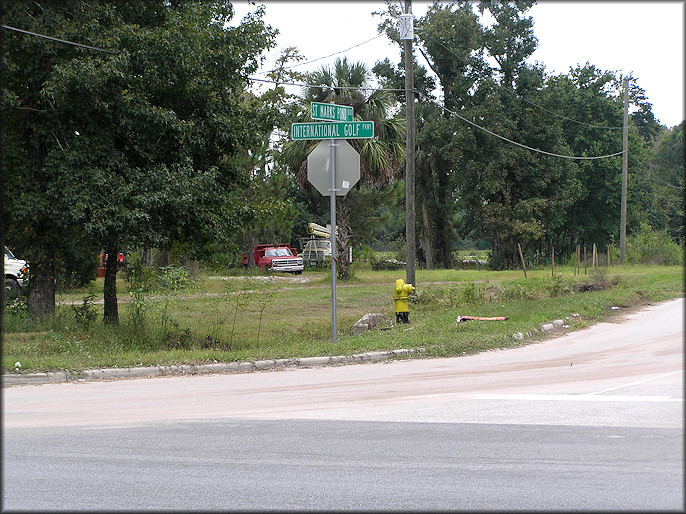|
Daedalochila uvulifera (Shuttleworth, 1852) Peninsula Liptooth In St. Johns County, Florida |
|
|
While surveying locations in northern St. Johns County for
Daedalochila
auriculata (Say, 1818) [Ocala Liptooth]
on 10/3/2009, this
reporter visited the intersection of St. Marks Pond Boulevard and
International Golf Parkway
(also known as Nine Mile Road) [GPS: 30.00261N
081.24153W - WGS-84 Datum], where the habitat appeared suitable
for Daedalochila. Much to his surprise, specimens of
Daedalochila uvulifera (both living specimens and empty shells)
were found representing the first known instance of this species
being recorded from St. Johns County and northeast Florida.
(see:
Daedalochila uvulifera Records For Florida).
Specimens of Daedalochila auriculata were also found (see:
Daedalochila
auriculata at Twelve Mile Swamp).
Several follow-up visits were made to the site and on each occasion additional D.
uvulifera (both living specimens and empty shells) were found
in the roadside swale both along the south side of International Golf Parkway and
the east side of St.
Marks Pond Boulevard in a relatively small area near the corner
(pictured below). During a follow-up visit on 10/11/2009 the
roadside swale on the west side of St. Marks Pond Boulevard was
initially surveyed and two living D. uvulifera were
found there as well. Interestingly, over a dozen live specimens of the carnivorous Euglandina rosea (Férussac, 1821) [Rosy Wolfsnail] were also found representing the highest concentration of this species ever observed by this reporter in a single small area. Dissection of some of the specimens revealed that they had been feeding on juveniles of both Polygyra species and Daedalochila species. Polygyra septemvolva Say, 1818 [Florida Flatcoil] and Polygyra cereolus (Mühlfeld, 1816) [Southern Flatcoil] are both abundant in the area - especially the latter species. Also see: Euglandina rosea (Férussac, 1821) Feeding Preserved specimens from this locality were provided to the Florida Museum of Natural History (Gainesville, Florida) for further study. |
|
|
Looking southeast at the intersection of International Golf Pkwy. and St. Marks Pond Blvd. where the Daedalochila were found |
|
|
|
|
